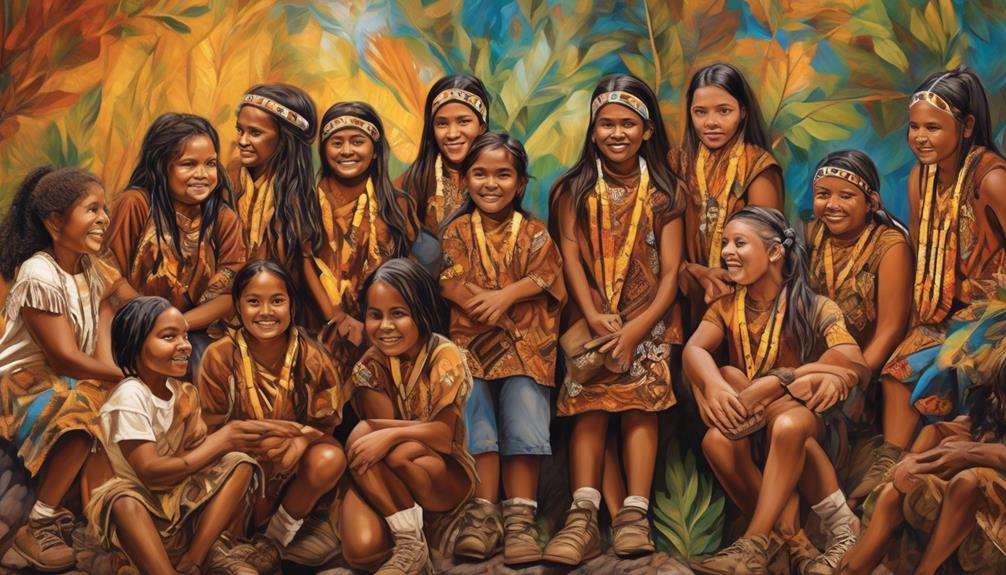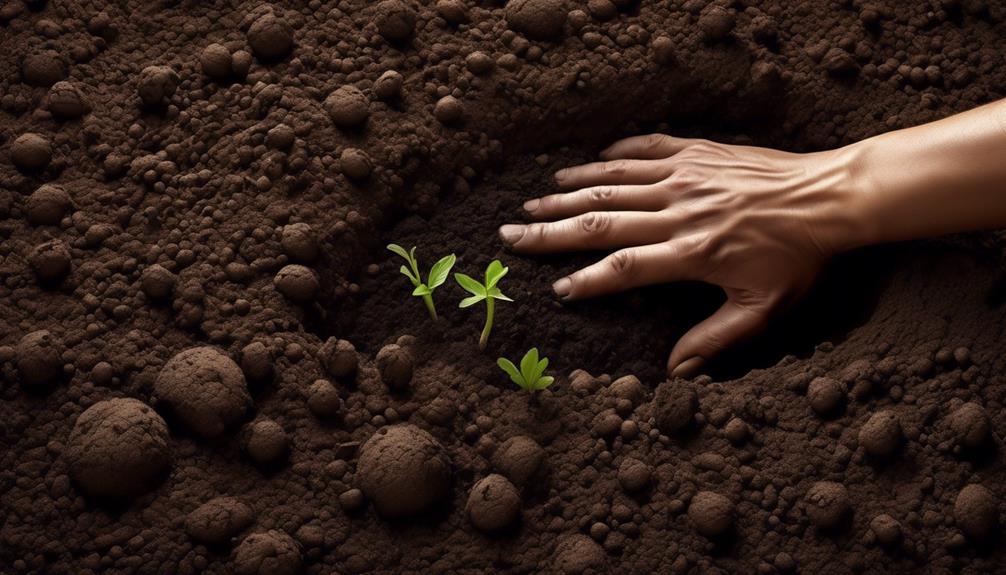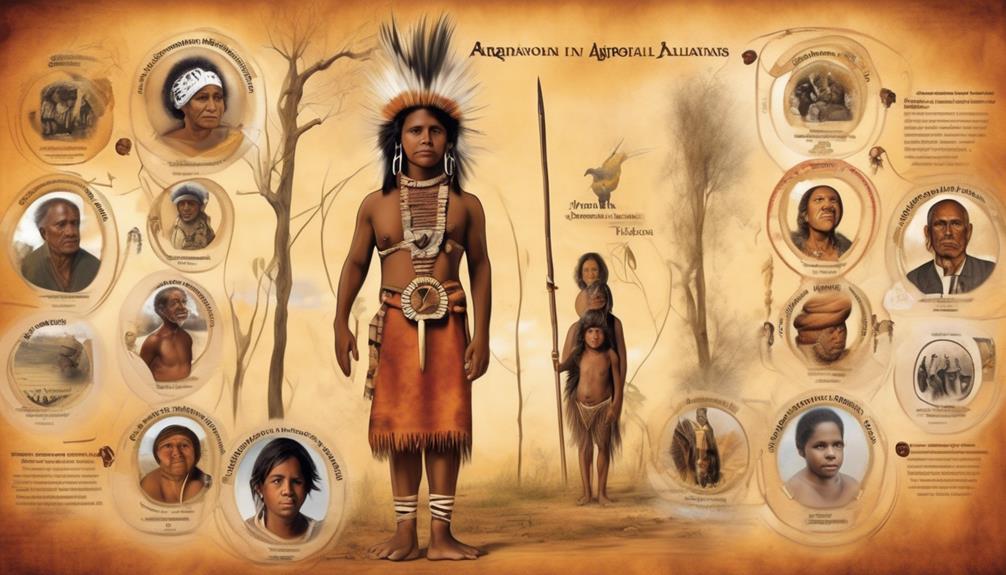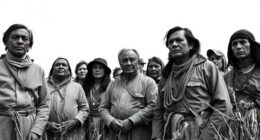Do you ever wonder if the commonly held belief that Indigenous populations have lower IQs than non-Indigenous groups is valid?
The topic of Aboriginal IQ has been a subject of much debate and controversy, with various theories and perspectives shaping the discourse. As you explore this complex and sensitive issue, you may find yourself questioning the validity of IQ testing methods and the impact of cultural factors on intelligence assessment.
Key Takeaways
- Colonial influence shapes perceptions of intelligence within Aboriginal communities.
- Cultural factors and beliefs can impact performance on IQ tests and lead to score disparities.
- Traditional IQ tests may not capture the full spectrum of intelligence valued within Aboriginal cultures.
- Addressing educational disparities for Aboriginal students requires culturally responsive teaching methods, equitable access to resources and support, and community engagement.
The History of Aboriginal IQ Testing
The history of Aboriginal IQ testing reveals a complex and contentious relationship between Indigenous communities and the practice of intelligence assessment. Colonial influence has played a significant role in shaping the perceptions of intelligence within Aboriginal communities. The imposition of Western standards of intelligence assessment has perpetuated intelligence stereotypes that have marginalized Aboriginal peoples.
Colonial influence has led to the development of IQ tests that don't consider the cultural and linguistic diversity of Indigenous communities. As a result, these tests often fail to accurately measure the intelligence of Aboriginal individuals, leading to misconceptions and misinterpretations of their cognitive abilities. This has perpetuated damaging intelligence stereotypes that have contributed to the marginalization and discrimination of Aboriginal peoples.
Understanding the history of Aboriginal IQ testing requires an examination of the colonial forces that have shaped the development and implementation of intelligence assessments within Indigenous communities. By acknowledging the impact of colonial influence and intelligence stereotypes, a more respectful and contextual approach to intelligence assessment can be developed, one that considers the diverse cultural and linguistic backgrounds of Aboriginal peoples.
Cultural Factors and IQ Assessment

Shifting the focus to cultural factors and IQ assessment reveals the intricate interplay between Indigenous communities and the evaluation of intelligence, shedding light on the impact of historical colonial influence on intelligence assessments. Cultural influences play a significant role in shaping cognitive development and thus affect how intelligence is assessed. Within Indigenous communities, cultural practices, language, and belief systems all contribute to the development of cognitive skills, which in turn can influence performance on IQ tests.
| Cultural Factor | Impact on IQ Assessment |
|---|---|
| Language | Different languages may emphasize certain cognitive skills over others, affecting performance on verbal IQ tests. |
| Cultural Practices | Traditional activities and ways of knowing may not align with the content of standard IQ tests, leading to disparities in scores. |
| Belief Systems | Cultural beliefs about intelligence and learning can influence test-taking attitudes and motivation, impacting test performance. |
| Community Support | The level of community support and resources available can affect access to educational opportunities, which in turn impacts cognitive development and IQ test performance. |
Understanding and respecting these cultural influences is crucial in ensuring fair and accurate assessments of intelligence within Indigenous communities. It is essential to recognize the diversity of cognitive abilities and the impact of cultural contexts on IQ assessment.
Critiques of IQ Testing in Aboriginal Communities
Critiquing the validity of IQ testing in Aboriginal communities reveals significant insights into the complexities of assessing intelligence within diverse cultural contexts. When considering critiques of IQ testing in Aboriginal communities, it's crucial to recognize the presence of cultural bias, which can significantly impact the results of these assessments. It's important to acknowledge that traditional IQ tests may not effectively capture the full spectrum of intelligence that's valued within Aboriginal cultures. Additionally, these tests may not account for the ways in which intelligence is demonstrated and valued within specific Aboriginal communities.
- Cultural Bias: The presence of cultural bias in traditional IQ tests raises concerns about the accuracy of intelligence assessments within Aboriginal communities.
- Alternative Measures: Exploring alternative measures of intelligence assessment that are more inclusive of diverse cultural values is essential in addressing the limitations of traditional IQ tests.
- Contextual Understanding: Developing a contextual understanding of intelligence within Aboriginal communities is crucial for creating more culturally sensitive and accurate assessments of intelligence.
Addressing Educational Disparities for Aboriginal Students

To address educational disparities for Aboriginal students, it's imperative to implement culturally responsive teaching methods and provide equitable access to resources and support.
Academic support plays a crucial role in leveling the playing field for Aboriginal students. Tailoring teaching approaches to incorporate cultural understanding can significantly enhance the learning experience and academic outcomes for these students. By integrating Indigenous perspectives and knowledge into the curriculum, educators can create a more inclusive and engaging learning environment.
Additionally, ensuring that educational resources are readily available and accessible is vital. This includes not only textbooks and materials but also technology and tools that can support diverse learning styles.
Community engagement is another key aspect of addressing educational disparities. Collaborating with Aboriginal communities and involving them in the educational process can foster a sense of belonging and cultural pride among students. It also provides valuable insights into the specific needs and challenges faced by Aboriginal students, allowing for more targeted and effective support. By working together with the community, educators can better understand the cultural context in which students learn and tailor their approaches accordingly.
Ultimately, by prioritizing cultural understanding, equitable access to resources, and community engagement, strides can be made in addressing educational disparities for Aboriginal students.
Promoting Equity and Inclusivity in IQ Assessment
You can promote equity and inclusivity in IQ assessment by ensuring that assessment tools and methods are culturally sensitive and account for diverse learning and cognitive styles. This involves recognizing the impact of culture on cognitive development and understanding that standardized testing may not accurately capture the abilities of individuals from different cultural backgrounds.
Here's how you can promote equity and inclusivity in IQ assessment:
- Culturally Sensitive Assessment: Develop assessment tools that consider the cultural background, experiences, and values of the individuals being assessed. This may involve using culturally relevant examples, language, and contexts in the assessment process.
- Diverse Learning and Cognitive Styles: Recognize that individuals may have different ways of learning and processing information. Incorporating multiple methods of assessment, such as visual, auditory, and kinesthetic, can provide a more comprehensive understanding of an individual's cognitive abilities.
- Collaboration with Communities: Engage with diverse communities to gain insights into their perspectives on intelligence and cognitive assessment. This collaboration can help in developing assessment methods that are more inclusive and reflective of the diverse ways intelligence is expressed across cultures.
Frequently Asked Questions
Can IQ Testing Accurately Measure the Intelligence of Aboriginal Individuals?
Can IQ testing accurately measure intelligence?
Cultural bias can affect test performance.
Cognitive development varies across cultures.
When discussing Aboriginal IQ, consider cultural factors that may impact test results.
It's important to recognize the limitations of standardized testing and consider alternative methods for assessing intelligence in diverse populations.
Understanding the influence of cultural differences on cognitive development is crucial for accurately evaluating intelligence in Aboriginal individuals.
Are There Specific Cultural Considerations That Need to Be Taken Into Account When Assessing the IQ of Aboriginal People?
When assessing intelligence, it's crucial to consider cultural sensitivity. Different cultures have unique perspectives on intelligence and learning, which can influence how individuals perform on intelligence assessments.
To ensure accurate intelligence assessment, it's essential to understand and respect the cultural nuances that may impact test results. By acknowledging and incorporating these cultural considerations, you can create a more inclusive and accurate assessment process that respects the diversity of human intelligence.
How Do Educational Disparities Impact IQ Test Results for Aboriginal Students?
Educational disparities significantly impact IQ test results for students.
Varied access to quality education, resources, and support can skew scores, creating a false measure of intelligence.
Test bias often fails to consider cultural differences and unfairly disadvantages certain groups, further distorting results.
It's essential to address these disparities and develop more inclusive assessment methods to accurately gauge cognitive abilities.
Understanding and addressing these disparities is crucial for fair and equitable educational opportunities.
What Initiatives Are Being Taken to Ensure That IQ Assessment Is Equitable and Inclusive for Aboriginal Individuals?
To ensure inclusive assessment, cultural sensitivity is key. Initiatives are being taken to incorporate diverse cultural perspectives into the assessment process. This involves recognizing and respecting the unique backgrounds and experiences of individuals.
Are There Alternative Methods of Assessing Intelligence That Are More Culturally Sensitive for Aboriginal Communities?
When considering cultural perspectives, it's important to acknowledge that intelligence assessment methods should be sensitive to diverse communities.
Alternative methods that prioritize cultural relevance can provide a more inclusive approach to assessing intelligence.
Understanding and valuing the unique cultural contexts of different communities is essential in developing effective and respectful intelligence assessment methods.
Such approaches can help ensure that assessments accurately capture the strengths and abilities of individuals from various cultural backgrounds.
Conclusion
As you reflect on the complex topic of Aboriginal IQ, consider the diverse perspectives and experiences that shape our understanding of intelligence.
Embracing cultural sensitivity and inclusivity in IQ assessment is essential for promoting equity in education.
Let's continue to challenge traditional notions of intelligence and strive for a more holistic and respectful approach to evaluating cognitive abilities.
After all, intelligence is multifaceted, and every individual's unique strengths should be celebrated.









